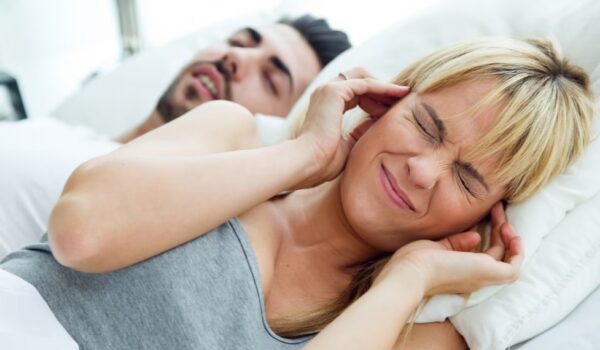Sleep apnea (SA), a condition affecting millions globally, is marked by pauses in breathing during sleep. While it can have serious health implications, the rising trend in diagnoses has sparked debates over whether sleep apnea is being overdiagnosed.
This article aims to scrutinize the factors contributing to the surge in sleep apnea diagnoses, including advancements in technology and changing medical perspectives and will weigh the pros and cons of this phenomenon. Join us as we delve into the complexity of diagnosing SA and examine whether or not its incidence is being inflated.
Understanding Sleep Apnea
SA is a condition that can have significant effects on a person’s quality of life. It is essential to understand the basics of SA before delving into the issue of overdiagnosis.
SA is not just a simple case of snoring; it is a complex disorder that affects the way a person breathes during sleep. It is characterized by recurrent pauses in breathing, known as apneas, which can last for a few seconds to minutes and occur multiple times throughout the night. These apneas can disrupt the normal sleep cycle, leading to fragmented and poor-quality sleep.
There are three types of SA:
- Obstructive (OSA): This is the most common type of SA, accounting for about 84% of cases. In OSA, the airway becomes partially or completely blocked during sleep, usually due to the relaxation of the throat muscles. This obstruction leads to breathing difficulties and can result in loud snoring, gasping, or choking sounds as the person tries to breathe;
- Central (CSA): Unlike OSA, CSA is not caused by a physical obstruction in the airway. Instead, it occurs when the brain fails to send the proper signals to the muscles that control breathing. This type of SA is less common and often associated with underlying medical conditions, such as heart failure or stroke;
- Complex Syndrome (CSAS): Also known as treatment-emergent central SA, CSAS is a combination of both obstructive and central SA. It typically starts as OSA but develops into CSA after treatment with continuous positive airway pressure (CPAP) therapy.
Common Symptoms and Signs
Identifying sleep apnea can be challenging, as many of its symptoms are not exclusive to this disorder and can occur in other sleep-related conditions. However, certain signs and symptoms are commonly associated with SA:
- Loud Snoring: One of the hallmark symptoms of SA is loud, disruptive snoring. The snoring is often more prominent during obstructive episodes when the airway is partially or completely blocked;
- Gasping or Choking During Sleep: As the airway becomes blocked, the person may experience sudden awakenings accompanied by gasping or choking sounds as they struggle to breathe;
- Excessive Daytime Sleepiness: Due to the fragmented sleep caused by frequent awakenings, individuals with SA often feel excessively sleepy during the day. This excessive daytime sleepiness can interfere with daily activities and increase the risk of accidents;
- Morning Headaches: Waking up with a headache is another common symptom of SA. The headaches are often described as dull and throbbing and may be accompanied by feelings of fatigue;
- Difficulty Concentrating: Poor sleep quality can impair cognitive function, making it challenging to concentrate, remember things, and stay focused during the day.
Risk Factors and Causes
Several risk factors contribute to the development of SA. Understanding these risk factors can help identify individuals who may be at a higher risk of developing the condition:
- Obesity: Excess weight, particularly around the neck, can increase the risk of SA. Fat deposits can narrow the airway and make it more susceptible to collapse during sleep;
- Smoking: Smoking irritates the airways and can cause inflammation and swelling, increasing the likelihood of airway obstruction during sleep;
- Alcohol Consumption: Alcohol relaxes the muscles, including those in the throat, which can lead to airway collapse and breathing difficulties during sleep;
- Family History: SA can run in families, suggesting a genetic component to the condition;
- Age: SA becomes more common as people age. The loss of muscle tone and the natural aging process can contribute to airway collapse during sleep;
- Gender: Men are more likely to develop SA than women, although the risk for women increases after menopause.
It is important to note that while these risk factors can increase the likelihood of developing SA, anyone, regardless of their risk profile, can be affected by this sleep disorder.
The Rise in Sleep Apnea Diagnoses
In recent years, the number of SA diagnoses has been increasing significantly. This rise can be attributed to various factors, including heightened awareness among healthcare professionals and the general public, advancements in technology, and changes in diagnostic criteria.
Trends in Diagnosis Rates
The prevalence of SA diagnoses has risen steadily over the past decade. According to recent studies, an estimated 9% to 38% of adults worldwide have SA, with rates varying across different populations. This increase in diagnoses is partially due to improved screening and detection methods.
Impact of Technology on Diagnosis
Advancements in technology have played a significant role in the increased detection of SA cases. Portable sleep monitors and smartphone apps have made it easier for individuals to undergo sleep studies in the comfort of their own homes.
Additionally, healthcare professionals now have access to more sophisticated equipment that can accurately diagnose SA.
The Controversy Surrounding Overdiagnosis
The idea that SA may be overdiagnosed has sparked debate among medical professionals. While some argue that the rising number of diagnoses is a positive outcome, others express concerns about potential consequences.

The Debate Among Medical Professionals
Within the medical community, there is a difference of opinion regarding the risk of overdiagnosing SA. Some experts believe that the increased awareness and diagnoses have led to more people receiving appropriate treatment and improved health outcomes.
However, others argue that overdiagnosis can lead to unnecessary interventions and undue financial burden on patients and healthcare systems.
Potential Consequences of Overdiagnosis
Overdiagnosis can have various negative implications.
- It may result in overtreatment, exposing patients to unnecessary procedures, medications, or therapies;
- Furthermore, the stigma associated with a SA diagnosis can cause unnecessary anxiety and distress for individuals who may not need treatment;
- Finally, overdiagnosis can strain healthcare resources and divert attention from individuals who genuinely require medical intervention.
The Role of Sleep Studies in Diagnosis
Sleep studies are a crucial component of diagnosing SA accurately. These studies allow healthcare professionals to observe an individual’s sleep patterns, breathing, and other physiological parameters during the night.
The Process of Sleep Studies
During a sleep study, also known as polysomnography, individuals spend a night in a sleep laboratory or use home sleep testing equipment. Various sensors are attached to monitor brain waves, eye and muscle movements, heart rate, and breathing.
The data recorded during the study is then analyzed to determine if the individual has SA and assess its severity.
Accuracy and Reliability of Sleep Studies
While sleep studies are generally considered the gold standard for diagnosing SA, they are not infallible. Factors such as a single-night study, individual variability in sleep patterns, and external influences can impact the accuracy of the results.
It is crucial for healthcare professionals to consider multiple factors and employ clinical judgment when interpreting sleep study findings.
Alternatives to Traditional Diagnosis Methods
With the advancements in technology and the increasing demand for accessible healthcare, alternative methods for diagnosing SA have emerged.
Home Sleep Tests
By using portable sleep monitoring devices in the comfort of their own homes, individuals can perform sleep tests at a lower cost and with greater convenience. These devices measure parameters such as oxygen levels, heart rate, and breathing patterns to provide an estimation of SA presence.
While home sleep tests may not be as comprehensive as sleep studies conducted in a laboratory, they can serve as a valuable screening tool and help identify individuals who require further evaluation.
Role of Personal Health Trackers
Personal health trackers, such as wearable devices and smartphone apps, have gained popularity for monitoring various aspects of health, including sleep patterns.
While these trackers cannot diagnose SA, they can provide individuals with valuable insights into their sleep quality and patterns.
By tracking variables like sleep duration, snoring intensity, and movement during sleep, individuals can evaluate their sleep health and discuss concerns with healthcare professionals if necessary.
Final Thoughts
The increasing prevalence of SA diagnoses has raised questions about the potential overdiagnosis of this sleep disorder. While the rise in diagnoses can be attributed to improved awareness, technological advancements, and changes in diagnostic criteria, there are concerns about the consequences of overdiagnosis. Striking the right balance between accurate diagnosis and avoiding unnecessary interventions is crucial in managing SA effectively.
The use of sleep studies and alternative diagnostic methods, such as home sleep tests and personal health trackers, provides healthcare professionals with valuable tools for diagnosing SA and ensuring appropriate treatment. By understanding the controversies surrounding overdiagnosis, healthcare providers and individuals can collaborate to make informed decisions about SA diagnosis and management.
